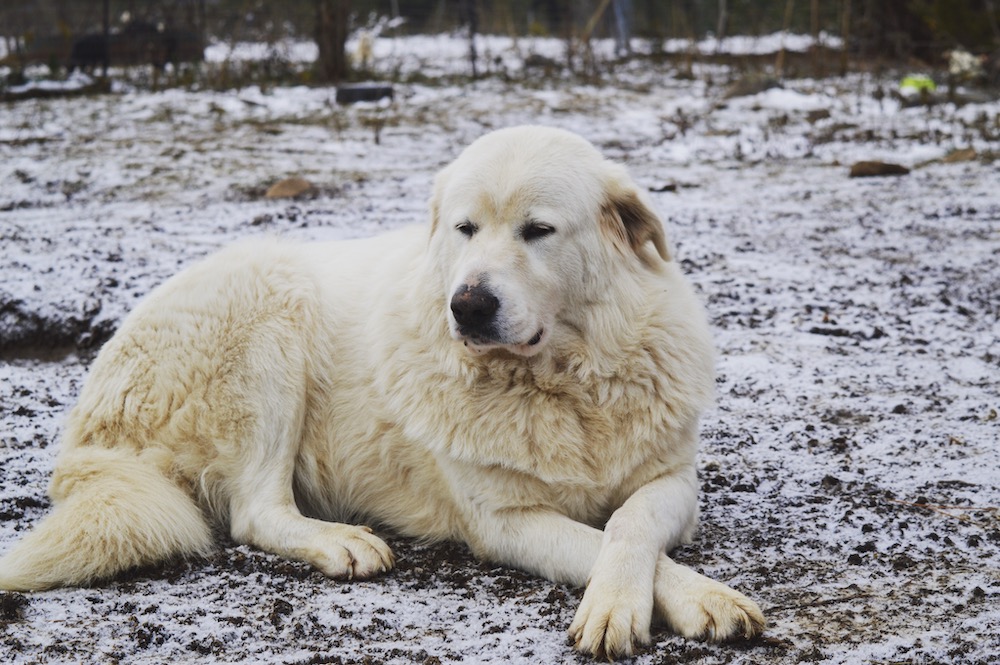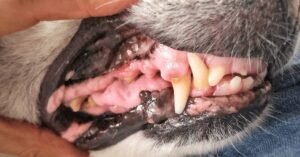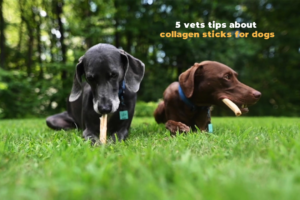Livestock guardian dogs play a crucial role on farms. They protect animals from predators and keep them safe. So let’s jump in deep: How to Keep Livestock Guardian Dogs from Roaming?
Yet, these dogs can sometimes roam too far from home. This can lead to various problems, from safety concerns to losing the dogs themselves. Keeping your livestock guardian dogs close is important for their well-being and your peace of mind.
A few simple strategies can help you manage their roaming behavior. Understanding why dogs wander is the first step. Factors like curiosity, boredom, and instinct often drive them. By addressing these causes, you can create a safe and secure environment. This blog will explore effective methods to keep your dogs focused on their job, ensuring they stay where they belong.
Table of Contents
The Nature Of Livestock Guardian Dogs
Understanding the nature of livestock guardian dogs helps in managing them. These dogs protect livestock from predators. Their behavior is influenced by breed characteristics and natural instincts. Knowing these traits can help prevent roaming.
Breed Characteristics
Livestock guardian dogs come in various breeds. Each breed has unique traits. Here are some common breeds:
| Breed | Size | Temperament |
|---|---|---|
| Maremma | Large | Gentle, Protective |
| Anatolian Shepherd | Large | Independent, Loyal |
| Great Pyrenees | Large | Calm, Affectionate |
These breeds are known for their strong guarding instincts. They bond closely with livestock. They may roam if they feel their territory is threatened.
Instincts And Behaviors
Instincts play a vital role in a livestock guardian dog’s behavior. Their primary instinct is to protect. They naturally patrol their area. This can lead to roaming if not managed properly.
- Territorial: They mark their territory to keep predators away.
- Vigilant: They stay alert to threats.
- Social: They bond well with livestock.
Understanding these behaviors helps in training. Consistent training reduces roaming. Provide them with a defined area. Use proper fencing to keep them close to the livestock.
Assessing Your Fencing Solutions
Keeping your livestock guardian dogs from roaming is crucial. Fencing plays a key role in this. Strong and effective fences keep dogs contained. Assessing your current fencing solutions helps you make improvements.
Types Of Fences For Containment
Different types of fences serve various purposes. Here are some popular options:
- Wire Fencing: This is durable and effective. It prevents dogs from digging or jumping.
- Electric Fencing: This option provides a strong deterrent. It is easy to install and can be moved.
- Stock Fencing: Designed for livestock, it can also contain dogs. Ensure it is tall enough.
- Picket Fencing: A more decorative option. It may not be as effective for larger dogs.
Fence Maintenance And Upkeep
Regular maintenance keeps your fences strong. Inspect them often for damage. Here are some tips:
- Check for loose wires or posts.
- Repair any holes or gaps.
- Clear vegetation that may weaken the fence.
- Test electric fences regularly to ensure they work.
Keeping your fences in good shape helps contain dogs. A well-maintained fence is more effective.
Training Techniques For Boundary Awareness
Training your livestock guardian dog for boundary awareness is crucial. This ensures they stay within safe limits. Proper training helps them understand where they can go. Let’s explore effective techniques.
Setting Boundaries
Establishing clear boundaries is the first step. Use physical markers like fences or flags. Here are some tips:
- Choose visible markers that stand out.
- Walk the dog along the boundary regularly.
- Use a consistent command for boundaries, such as “stay” or “back.”
Introduce the dog to the area. Let them explore and understand the limits. Always supervise them during this process. This helps them learn where they can roam.
Reinforcement Strategies
Positive reinforcement works well for teaching boundary awareness. Reward good behavior. Here are some effective strategies:
- Use treats when the dog stays within limits.
- Give praise and attention for staying back.
- Apply gentle corrections if they cross the boundary.
Consistency is key. Repeat commands and rewards. Keep training sessions short and engaging. This builds a strong understanding of boundaries.
| Action | Purpose |
|---|---|
| Walk the boundary | Familiarizes the dog with limits |
| Use treats | Encourages good behavior |
| Provide praise | Boosts confidence and learning |
| Apply corrections | Reinforces boundaries |
Staying patient is essential. Each dog learns at their own pace. Celebrate small victories. This keeps the training process enjoyable.
The Role Of Spaying Or Neutering
Spaying or neutering livestock guardian dogs can help control roaming behavior. This procedure can reduce their urge to wander. Understanding its effects is crucial for dog owners. Below are two important areas to consider.
Impact On Roaming Behavior
Spaying or neutering affects a dog’s roaming habits in several ways:
- Reduces Hormonal Drives: These procedures decrease sex hormones. Less hormone means less desire to roam.
- Minimizes Territorial Behavior: Neutered dogs show less aggression. They are less likely to defend their territory.
- Less Distraction: Spayed or neutered dogs focus more on work. They won’t be distracted by other animals.
Fewer distractions lead to better protection of your livestock. This can keep your animals safe and secure.
Health Benefits
Spaying and neutering also bring several health advantages:
| Procedure | Health Benefit |
|---|---|
| Spaying | Reduces risk of uterine infections and breast tumors. |
| Neutering | Decreases risk of testicular cancer and prostate problems. |
Healthier dogs are more energetic and attentive. They perform better in their guardian roles. This enhances the safety of your livestock.
Utilizing Gps And Tech Collars
Keeping livestock guardian dogs from roaming is crucial for their safety. Using GPS and tech collars can help you monitor their movements. These devices provide real-time updates and alerts. They ensure your dogs stay within safe boundaries.
Choosing The Right Device
Selecting the right GPS collar is important. There are many options available. Consider the following factors:
- Battery Life: Longer battery life means less frequent charging.
- Durability: Look for collars that can withstand rough conditions.
- Range: Ensure the device covers your entire property.
- Subscription Fees: Check if there are ongoing costs for using the service.
Some popular devices include:
| Device Name | Key Features | Price Range |
|---|---|---|
| Whistle GO Explore | Activity tracking, GPS location | $80 – $100 |
| Tractive GPS | Live tracking, virtual fence | $50 – $70 |
| Garmin Alpha 100 | Tracking and training features | $600 – $800 |
Monitoring Movement
Once you have the device, monitoring movement is key. Use the app linked to the collar. Set up geofences to create safe zones. Receive alerts when your dog leaves these zones.
Regularly check the location. This helps you understand their roaming patterns. Adjust boundaries as needed. Here are some tips:
- Check the app daily for updates.
- Review movement history weekly.
- Adjust geofences based on behavior.
With the right tools, you can keep your livestock guardian dogs safe. Technology makes monitoring easier.

Credit: spotonfence.com
Creating A Stimulating Environment
Creating a stimulating environment is key for livestock guardian dogs. These dogs need both mental and physical engagement. A bored dog may wander off to explore. Keeping them busy can help prevent roaming.
Enrichment Activities
Enrichment activities provide mental stimulation. Here are some effective options:
- Interactive toys: Use toys that challenge their mind.
- Hide and seek: Hide treats or toys for them to find.
- Obstacle courses: Set up courses to encourage agility.
- Training sessions: Regular training keeps their mind sharp.
Mix up activities to keep them engaged. Change toys and games often. Variety helps prevent boredom.
Meeting Physical Needs
Physical exercise is vital for livestock guardian dogs. Here are ways to meet their needs:
| Activity | Description |
|---|---|
| Daily walks | Take them on walks to explore new areas. |
| Playtime | Engage in fetch or tug-of-war games. |
| Socialization | Allow them to interact with other dogs. |
| Work tasks | Involve them in farm chores. |
These activities help burn off energy. A tired dog is less likely to roam. Keep their exercise routine consistent.
Companionship As A Deterrent
Livestock guardian dogs thrive on companionship. A strong bond with other dogs can reduce their desire to roam. Keeping them engaged can help them stay focused on their duties. Here are some effective ways to use companionship as a deterrent.
The Importance Of Social Interaction
Social interaction is crucial for livestock guardian dogs. They are pack animals by nature. Here are a few reasons why social interaction matters:
- Reduces boredom: Dogs that interact with others are less likely to become bored.
- Promotes training: Social dogs learn faster and follow commands better.
- Strengthens bonds: Dogs feel more secure with companions.
Investing time in social activities helps maintain their focus. Dogs that play together build trust and teamwork. This connection can keep them close to their livestock.
Pairing Dogs
Pairing livestock guardian dogs is an effective strategy. Two dogs can support each other. Here are some benefits of pairing:
| Benefit | Description |
|---|---|
| Companionship | Dogs feel less lonely and more secure. |
| Increased vigilance | Two dogs can better guard livestock. |
| Shared responsibilities | Dogs can take turns watching over the flock. |
Choose dogs with similar energy levels. They will play well together. Monitor their interactions to ensure harmony. A well-matched pair can significantly reduce roaming behavior.

Credit: apriltellsall.com
Dealing With Escapes
Livestock Guardian Dogs (LGDs) are great helpers. They protect livestock. Sometimes, they roam away. This can cause problems. Knowing how to deal with escapes is essential for their safety and the safety of your livestock.
Responding To Roaming Incidents
Quick action is important when your dog escapes. Follow these steps:
- Stay Calm: Panic can make things worse.
- Search the Area: Check nearby fields, woods, and roads.
- Call Their Name: Use a cheerful tone to attract them.
- Use Treats: Show their favorite snack to lure them back.
- Alert Neighbors: Ask them to keep an eye out.
Make a note of how often your dog escapes. This can help you find patterns in their behavior.
Preventative Measures Post-escape
After an escape, take steps to prevent future incidents. Consider these options:
| Measure | Description |
|---|---|
| Reinforce Fencing | Check for weak spots. Fix or upgrade the fence. |
| Install Double Gates | This helps keep dogs inside during busy times. |
| Provide More Space | A larger area can help reduce roaming behavior. |
| Regular Exercise | Keep your dog active. Tired dogs are less likely to roam. |
| Training Sessions | Teach recall commands. Practice these often. |
Implementing these measures can help keep your LGDs safe. It reduces the chances of them wandering off.
Community Engagement And Education
Keeping livestock guardian dogs from roaming requires community support. Engaging with neighbors helps create a safer environment. Education plays a key role in this process. Sharing knowledge can improve understanding of guardian dogs and their needs.
Informing Neighbors
Start by informing your neighbors about your livestock guardian dogs. This helps them understand the role these dogs play. Here are some effective ways to inform them:
- Host an open house on your farm.
- Share flyers with information about guardian dogs.
- Use social media to connect with local groups.
Explain the benefits of having these dogs. Highlight how they protect livestock. Address any concerns neighbors might have. Clear communication builds trust.
Building A Support Network
Creating a support network is essential. Connect with other farmers or dog owners. Share experiences and tips. A strong network can help in many ways:
- Organize community meetings.
- Form a local group for livestock owners.
- Develop a shared resource list.
Offer to educate your support network. Discuss training methods and roaming solutions. Encourage them to engage with their neighbors too.
Consider forming a community watch program. This can help monitor livestock guardian dogs. Everyone can play a part in keeping the area safe.

Credit: www.forloveoflivestock.com
Regular Health Check-ups And Care
Keeping your livestock guardian dog healthy is key. Regular health check-ups help catch problems early. Good care ensures your dog stays focused on its job. A healthy dog is less likely to roam. Make these check-ups part of your routine.
Veterinary Support For Behavioral Issues
Sometimes, dogs roam due to behavioral issues. Consult a veterinarian for help. They can identify health problems that cause strange behavior. Here are common issues to discuss:
- Fear or anxiety: Dogs may roam if scared.
- Hormonal changes: Unspayed or unneutered dogs may seek mates.
- Medical conditions: Illness can lead to restlessness.
Regular visits to the vet help monitor these issues. They can suggest treatments or training. A well-adjusted dog is less likely to wander off.
Nutritional Considerations
Nutrition plays a big role in your dog’s behavior. A balanced diet keeps your dog healthy and happy. Poor nutrition can lead to energy spikes or anxiety. Follow these tips for a better diet:
- Choose high-quality dog food.
- Include protein, fats, and carbohydrates.
- Provide fresh water at all times.
- Avoid feeding table scraps.
Consult your vet about specific dietary needs. A good diet supports overall health. This helps your dog stay focused and reduces roaming.
Frequently Asked Questions
How Can I Train My Livestock Guardian Dog Not To Roam?
Training your livestock guardian dog requires consistency and patience. Start with basic commands and reinforce them with positive rewards. Gradually introduce boundaries and monitor their behavior. Use tools like collars with GPS tracking to ensure they stay within designated areas.
Regular exercise also helps reduce roaming tendencies.
What Are Effective Methods To Keep Guardian Dogs Close?
Effective methods include establishing a secure perimeter and using visual barriers. Training sessions that reinforce commands like “stay” or “come” are essential. Providing ample enrichment, such as toys and tasks, keeps them engaged. Additionally, socializing them with livestock reinforces their protective instincts and reduces wandering.
Why Do Livestock Guardian Dogs Roam?
Livestock guardian dogs may roam due to instinctual behaviors, boredom, or lack of stimulation. Their natural guarding instincts drive them to patrol their territory. If they are not adequately exercised or mentally challenged, they might explore beyond their boundaries. Providing regular engagement helps mitigate this behavior effectively.
Can I Use A Fence To Limit My Dog’s Roaming?
Yes, a fence is an effective way to limit your dog’s roaming. Ensure the fence is tall and secure to prevent jumping or digging. Regularly check for any gaps or weaknesses that might allow escape. Reinforcing the area with visual markers can also help the dog understand their boundaries.
Conclusion
Keeping livestock guardian dogs from roaming is essential for their safety. Set clear boundaries with fences. Train them regularly to understand where they can go. Provide enough exercise to keep them happy. Monitor their behavior to catch any wandering early.
A strong bond with your dog helps too. With patience and consistency, you can manage their roaming. This will protect your livestock and keep your dogs safe. Following these tips will create a better environment for everyone. Happy dogs mean happy farms.



